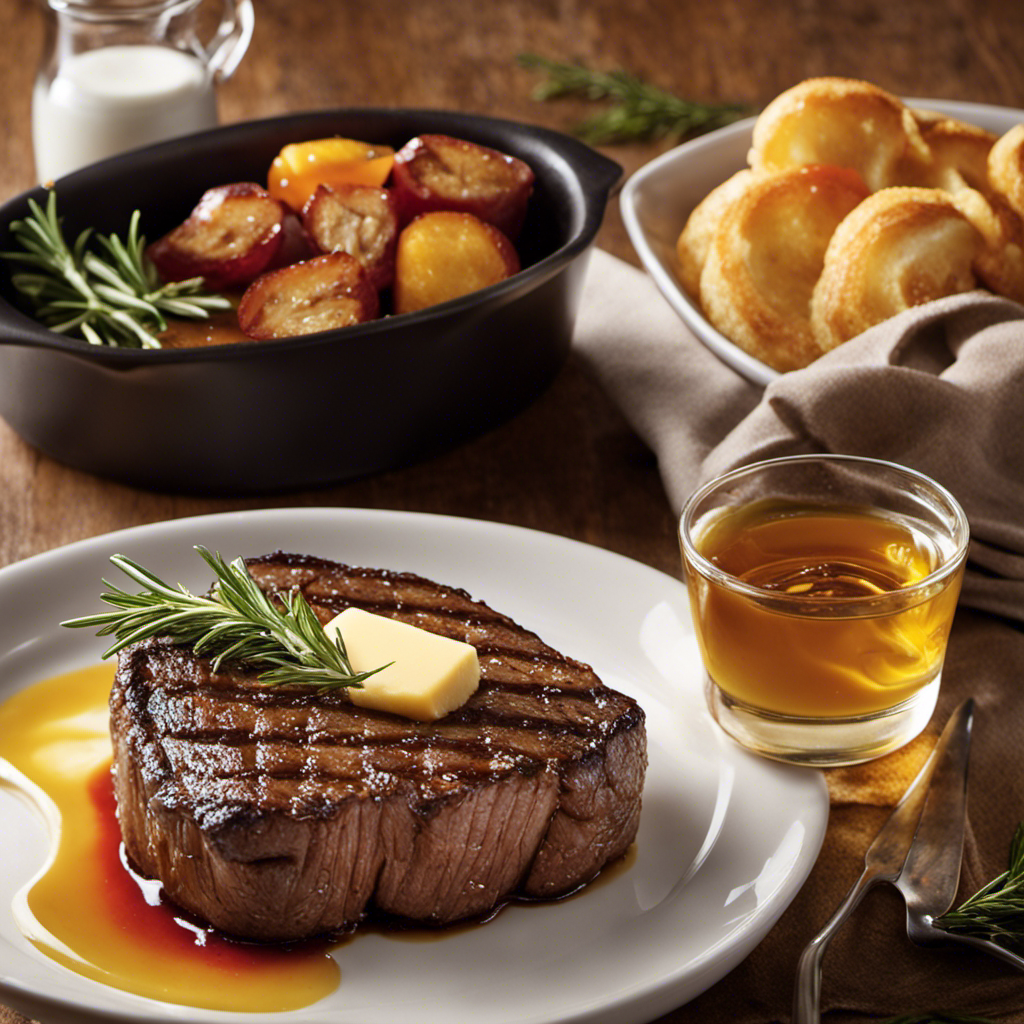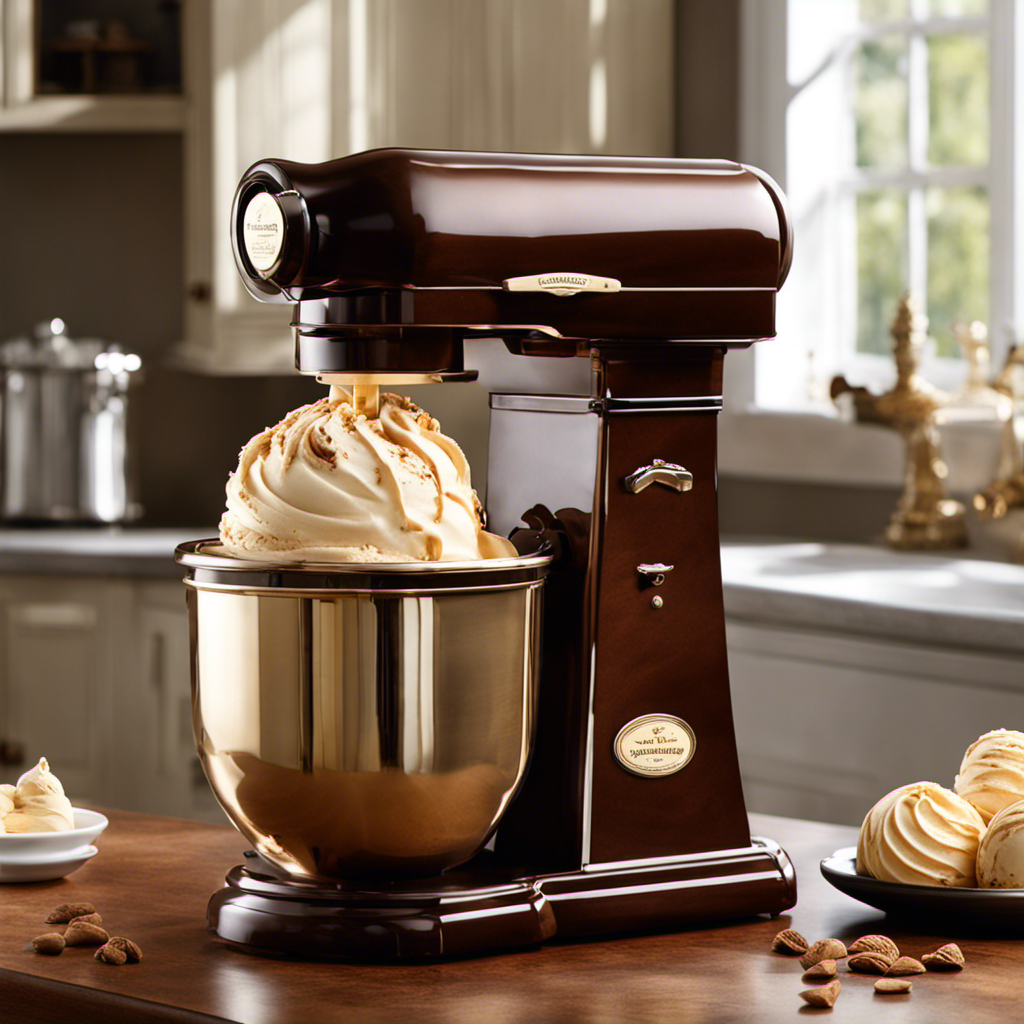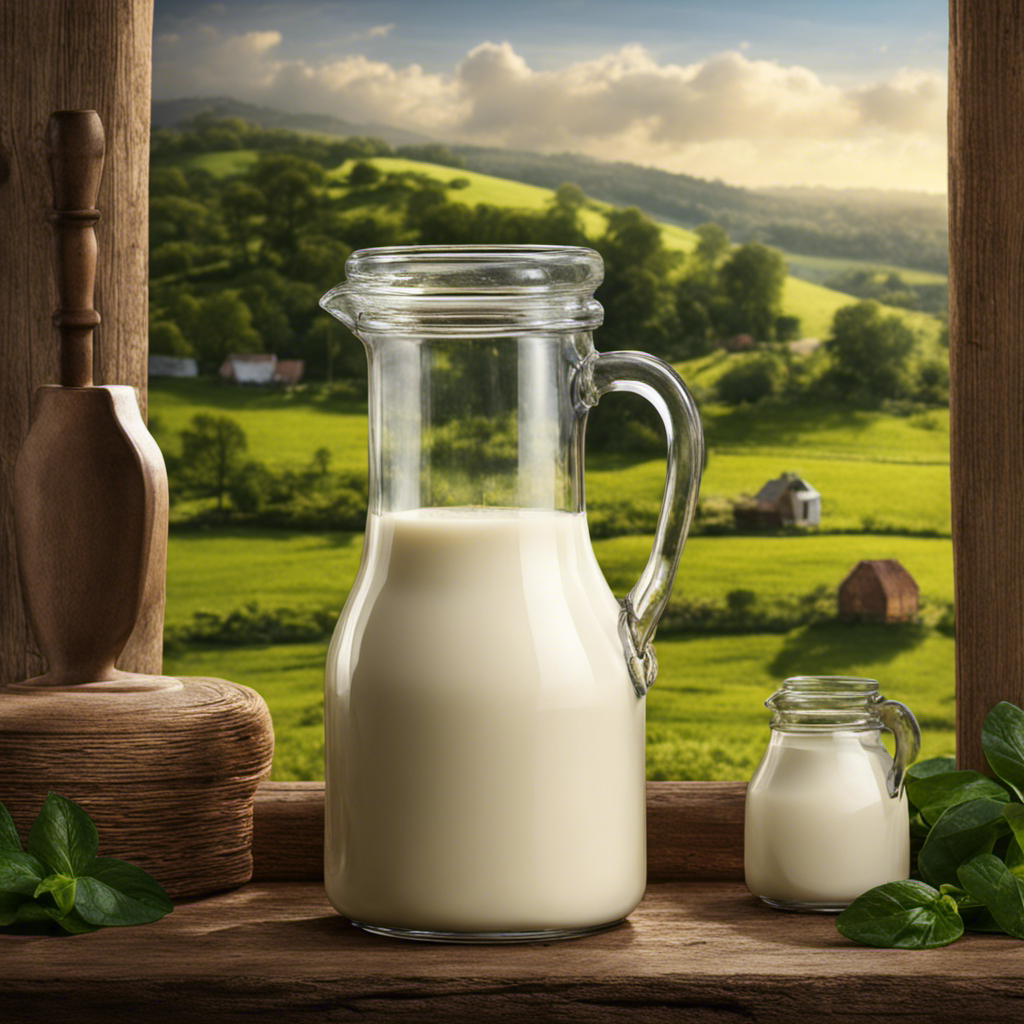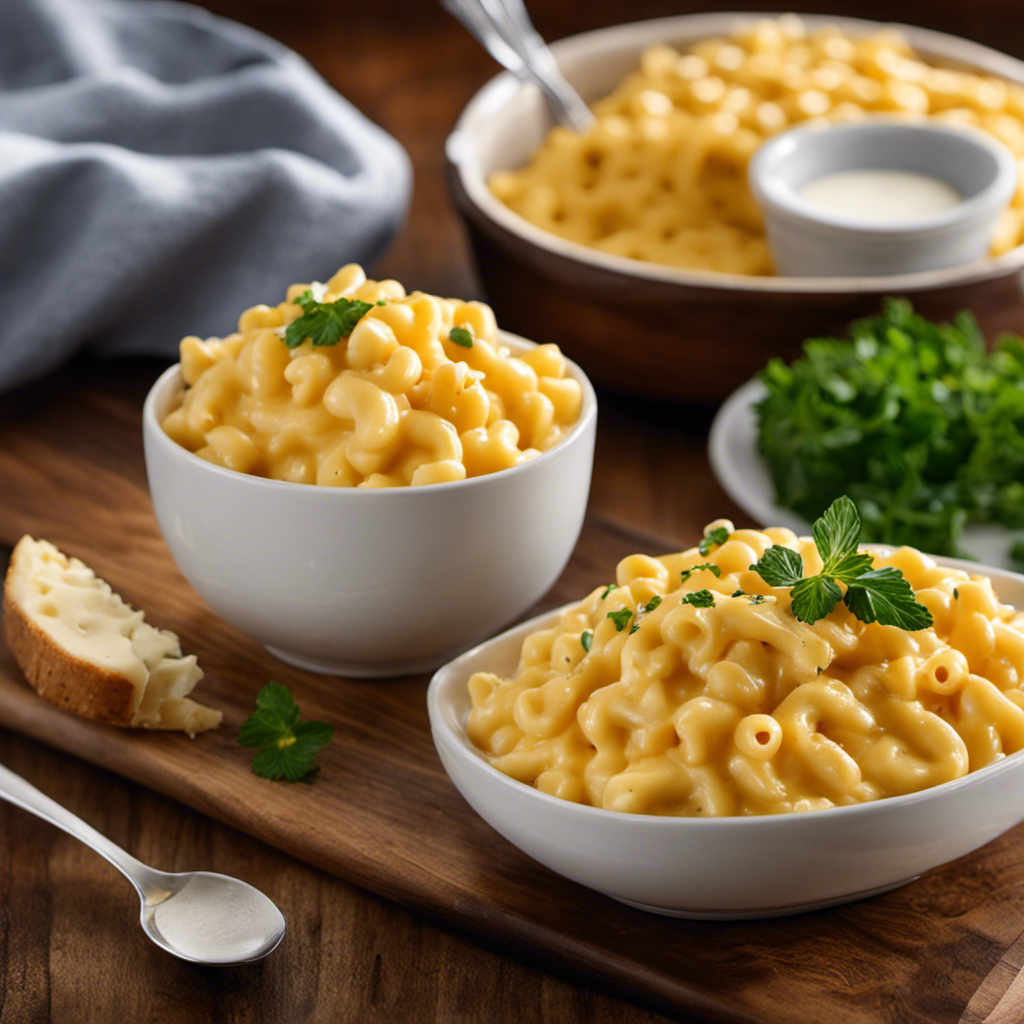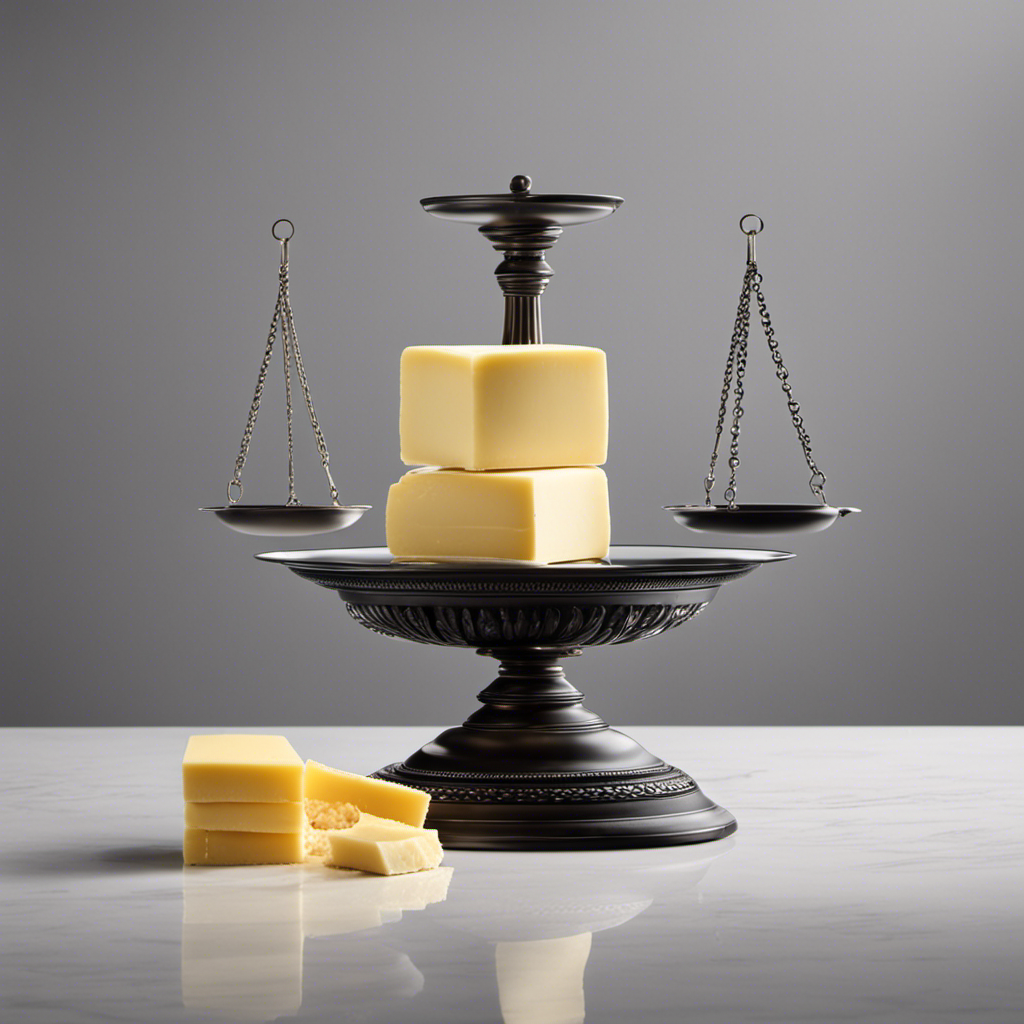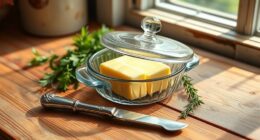As someone who loves steak, there’s no better sensation than hearing the sizzle of a delicious piece of meat hitting a hot pan. And when you add in the delightful scent of rosemary and the luxurious richness of butter, you have a formula for culinary excellence.
In this article, I’ll guide you through the steps of cooking steak with rosemary and butter, from choosing the right cut to the final mouthwatering bite.
Get ready to elevate your steak game to a whole new level.
Key Takeaways
- Choose cuts of steak known for tenderness, such as filet mignon or ribeye, and look for visible marbling throughout.
- Experiment with different marinating techniques and cooking methods, such as grilling, pan-searing, and broiling.
- Season the steak with salt and pepper before cooking, and consider alternative seasoning options like garlic and herb butter or a Cajun spice blend.
- Sear the seasoned steak in a preheated cast-iron skillet for a perfect crust, and use a meat thermometer to ensure desired doneness.
Choosing the Right Cut of Steak
When choosing the right cut of steak, it’s important to consider factors like tenderness and marbling. The tenderness of a steak is determined by the muscle it comes from and the amount of connective tissue present. Look for cuts like filet mignon or ribeye, which are known for their tenderness.
Marbling refers to the fat content within the muscle fibers, which adds flavor and juiciness to the steak. Look for steaks with visible marbling throughout.
Once you have chosen the perfect cut, there are various marinating techniques and cooking methods to enhance its flavor and texture. Marinating the steak with herbs, spices, and acids can tenderize the meat and infuse it with flavor. Popular cooking methods include grilling, pan-searing, and broiling. Experiment with different techniques to find the one that suits your taste preferences best.
Preparing the Steak
To enhance the flavor, don’t forget to season the meat with salt and pepper before searing it.
Once you’ve chosen the right cut of steak, it’s time to prepare it for cooking. One of the best ways to infuse the steak with flavor is through marinating. Marinating techniques vary, but a simple method is to combine rosemary, minced garlic, olive oil, and a splash of lemon juice. Let the steak marinate in this mixture for at least 30 minutes, or even overnight for a more intense flavor.
When it’s time to cook, there are several methods you can use, such as grilling, pan-searing, or broiling. Each method has its own benefits, so choose the one that suits your preference.
Regardless of the cooking method, be sure to let the steak rest for a few minutes before slicing and serving. This will allow the juices to redistribute, resulting in a tender and flavorful steak.
Seasoning the Steak
Don’t forget to generously sprinkle salt and pepper on your steak to add a burst of flavor. Seasoning is a crucial step in preparing a delicious steak. While salt and pepper are classic choices, there are also alternative seasoning options that can enhance the taste of your meat. One popular technique is marinating the steak before cooking. Marinating involves soaking the steak in a mixture of flavorful ingredients, such as herbs, spices, and acids like vinegar or citrus juice. This allows the flavors to penetrate the meat, resulting in a more tender and flavorful steak. Another option is to use a dry rub, which is a mixture of herbs, spices, and salt that is applied directly to the surface of the steak. This creates a flavorful crust when cooked. Now that we have seasoned our steak, it’s time to move on to the next step: searing it to perfection.
| Marinating Techniques | Alternative Seasoning Options |
|---|---|
| Vinegar and Herbs | Garlic and Herb Butter |
| Soy Sauce and Ginger | Cajun Spice Blend |
| Citrus Juice and Spices | Smoked Paprika and Rosemary |
| Red Wine and Garlic | Chimichurri Sauce |
With the steak properly seasoned, we can move on to the next step: searing it to perfection.
Searing the Steak
Now that you have seasoned your steak, it’s time to sear it to perfection. Searing is a crucial step in cooking a steak as it creates a beautiful crust and enhances the flavors.
To achieve a perfect crust, start by preheating a cast-iron skillet over high heat. Make sure the skillet is hot enough to create a sizzle when the steak hits the pan.
Place the seasoned steak in the skillet and let it cook undisturbed for about 2-3 minutes on each side. This will develop a nice brown crust.
To achieve the ideal level of doneness, use a meat thermometer to check the internal temperature. For medium-rare, aim for 130-135°F.
Adding Rosemary and Butter
When it comes to enhancing the flavor of your steak, there are a few techniques that can really make a difference.
One option is to add rosemary and butter during the cooking process, which can infuse the meat with a rich, aromatic flavor.
Additionally, cooking time and temperature play a crucial role in achieving the perfect steak, ensuring it is cooked to your desired level of doneness.
Flavor Enhancement Techniques
To enhance the flavor of your steak, try rubbing it with a mixture of rosemary and butter before cooking. This simple technique adds a delightful aroma and taste to your meat. However, there are other flavor enhancement techniques you can explore to take your steak to the next level. Marinating is one such technique that involves soaking the meat in a flavorful liquid for a period of time. This allows the flavors to penetrate the steak, resulting in a more tender and flavorful dish. Another technique is using herb-infused oils. By infusing oils with herbs like rosemary, thyme, or garlic, you can impart a subtle yet distinct flavor to your steak. Experiment with different combinations and find the one that suits your palate best.
Here is an example of a table that showcases different herb-infused oils and their corresponding flavors:
| Herb | Oil Used | Flavor |
|---|---|---|
| Rosemary | Olive Oil | Earthy, woody |
| Thyme | Avocado Oil | Fresh, citrusy |
| Garlic | Sunflower Oil | Savory, pungent |
| Basil | Grapeseed Oil | Sweet, herbal |
Cooking Time and Temperature
Using a meat thermometer is crucial for ensuring that your steak is cooked to the desired level of doneness. Here are some important cooking techniques and tips to help you achieve the perfect steak:
-
Preheat your grill or pan to a high temperature.
-
Season the steak with salt and pepper, or your desired seasoning blend.
-
Place the steak on the hot grill or pan and cook for a few minutes on each side, depending on the thickness and desired doneness.
-
Use a meat thermometer to check the internal temperature of the steak. For rare, it should be around 125°F (52°C), medium-rare 135°F (57°C), medium 145°F (63°C), medium-well 155°F (68°C), and well-done 160°F (71°C).
-
Remove the steak from the heat and let it rest for a few minutes before serving to allow the juices to redistribute.
By following these cooking techniques and using a meat thermometer, you can ensure that your steak is cooked to perfection.
Now, let’s move on to the next step: resting and serving the steak.
Resting and Serving the Steak
When it comes to cooking the perfect steak, two key factors that often get overlooked are the resting time and serving temperature.
Resting the steak after cooking it allows the juices to redistribute, resulting in a more tender and flavorful piece of meat.
As for serving temperature, it’s essential to let the steak rest for a few minutes before slicing it to ensure that it stays warm but not overcooked.
Resting Time Importance
Resting the steak after cooking allows the flavors to intensify and the juices to redistribute, resulting in a more tender and flavorful final dish. The importance of marinating the steak cannot be overstated as it adds an extra layer of flavor and helps tenderize the meat. However, if you don’t have time to marinate, there are alternative resting methods you can try.
Here are some options to consider:
-
Dry brining: Sprinkle salt on the steak and let it sit in the refrigerator for at least an hour. This helps to enhance the natural flavors and tenderize the meat.
-
Seasoning rub: Apply a mixture of herbs and spices to the steak and let it sit at room temperature for 30 minutes before cooking. This allows the flavors to penetrate the meat.
-
Sous vide: Cook the steak in a vacuum-sealed bag at a precise temperature, then let it rest briefly before searing. This ensures even cooking and juiciness.
Serving Temperature Suggestions
After allowing the steak to rest, it’s time to focus on serving temperature suggestions. Achieving the ideal cooking times is crucial for a perfectly cooked steak, but serving it at the right temperature is equally important to enhance its flavors.
For medium-rare, the internal temperature should be around 130-135°F (54-57°C), medium at 140°F (60°C), and well-done at 160°F (71°C).
To ensure the steak stays juicy, I recommend marinating it before cooking. Marinating techniques infuse the meat with flavor and tenderize it, resulting in a more delicious and tender steak. You can use a simple marinade of olive oil, rosemary, garlic, salt, and pepper. Allow the steak to marinate for at least 30 minutes or up to 24 hours in the refrigerator for maximum flavor.
Frequently Asked Questions
How Do I Know Which Cut of Steak Is the Best for This Recipe?
I think the best steak cuts for this recipe would be ribeye or strip steak. As for alternative herbs, thyme or garlic would pair well with the steak.
Can I Use a Marinade or Rub on the Steak Before Cooking It?
Yes, you can definitely use a marinade or rub on the steak before cooking it. There are many marinade options and alternative seasonings that can enhance the flavor of your steak.
Should I Let the Steak Come to Room Temperature Before Searing It?
No, letting the steak come to room temperature before searing is not necessary. However, doing so can help cook it more evenly. The final result may be affected, yielding a juicier and more tender steak.
Can I Use Dried Rosemary Instead of Fresh Rosemary?
Yes, you can use dried rosemary as a substitute for fresh rosemary in the recipe. However, keep in mind that dried rosemary is more potent, so use about half the amount called for in the recipe.
How Long Should I Let the Steak Rest Before Serving It?
I like to let my steak rest for about 5 minutes before serving. This allows the juices to redistribute, resulting in a more tender and flavorful steak. It’s important to serve it at the right temperature too.
Conclusion
In conclusion, cooking steak with rosemary and butter is a delicious and flavorful way to enjoy this classic dish. By choosing the right cut of steak, preparing it properly, and seasoning it well, you can ensure a juicy and tender result.
Searing the steak to create a nice crust, and then adding the fragrant rosemary and rich butter, adds depth and complexity to the flavor. Finally, allowing the steak to rest before serving ensures a perfectly cooked piece of meat.
Give this recipe a try and taste the truth of this theory for yourself.
